Lonely Planet Kids
With the support of the publisher, Shelf Awareness celebrates the growth of Lonely Planet Kids.
With the support of the publisher, Shelf Awareness celebrates the growth of Lonely Planet Kids.
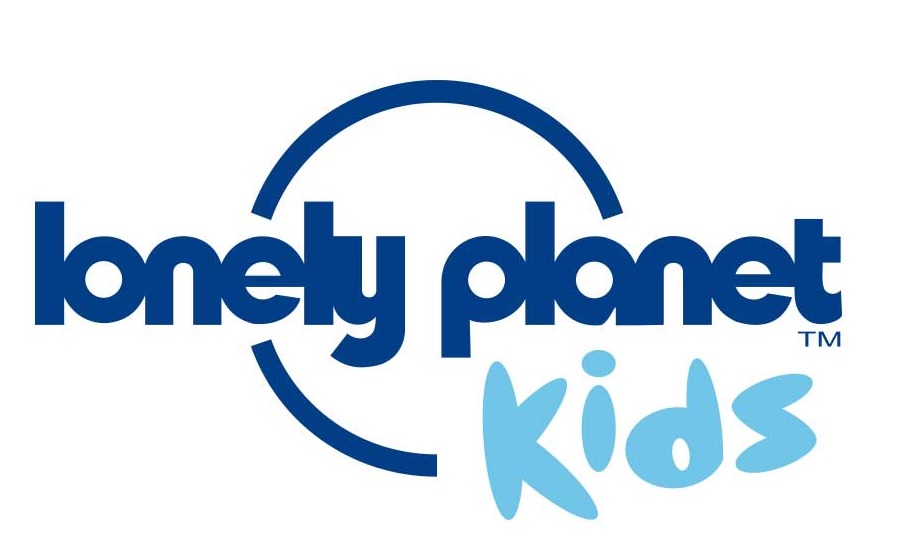 Lonely Planet began in 1973 with Tony and Maureen Wheeler's overland odyssey from London to Australia and the subsequent publication of Across Asia on the Cheap. Almost 45 years later, Lonely Planet is now the world's leading travel media company, a position it maintains by placing travelers at the heart of everything it does. With Lonely Planet Kids, the publisher wants to share its enthusiasm for the planet with a new, younger audience by exciting and educating children about the world around them.
Lonely Planet began in 1973 with Tony and Maureen Wheeler's overland odyssey from London to Australia and the subsequent publication of Across Asia on the Cheap. Almost 45 years later, Lonely Planet is now the world's leading travel media company, a position it maintains by placing travelers at the heart of everything it does. With Lonely Planet Kids, the publisher wants to share its enthusiasm for the planet with a new, younger audience by exciting and educating children about the world around them.
In 2011, Lonely Planet published its first books for children. Since then, Lonely Planet Kids has evolved and expanded to cover wide-ranging topics such as dinosaurs, space, Earth science, city planning and historical museums. Lonely Planet's company tagline is "Explore every day," and Lonely Planet Kids has the same goal of placing the essence of this fabulous world in children's hands and inspiring a new generation of curious explorers and potential travelers. Adults and children shouldn't save curiosity for travel, but rather approach life in a way that makes every day a passionate exploration.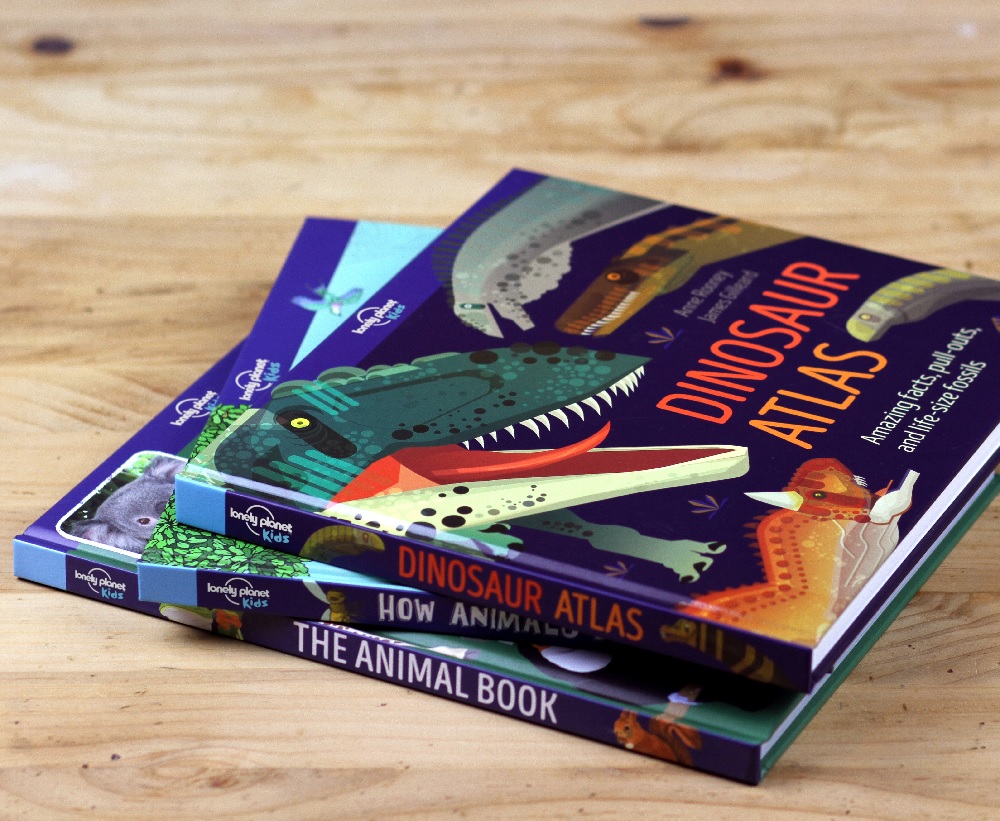 By this fall, the Lonely Planet Kids portfolio will have more than 75 products, including 10 additions from this past spring, 13 more to be added in the fall and another 25 planned for 2018. Beginning with the Fall 2017 list, all Lonely Planet Kids products will have a consistent, identifiable branding for buyers to recognize and trust.
By this fall, the Lonely Planet Kids portfolio will have more than 75 products, including 10 additions from this past spring, 13 more to be added in the fall and another 25 planned for 2018. Beginning with the Fall 2017 list, all Lonely Planet Kids products will have a consistent, identifiable branding for buyers to recognize and trust.
Look for the dark blue book spines with a light blue cap just above the logo on all forthcoming Lonely Planet Kids books--they can't wait to begin exploring every day with you!
 Piers Pickard is the managing director of Lonely Planet's publishing business. Before becoming a publisher, Piers worked as a magazine editor and travel journalist. He started his career with more than a decade in the travel industry, guiding small groups around mountain regions in five continents.
Piers Pickard is the managing director of Lonely Planet's publishing business. Before becoming a publisher, Piers worked as a magazine editor and travel journalist. He started his career with more than a decade in the travel industry, guiding small groups around mountain regions in five continents.
How have you seen Lonely Planet change and grow in your time there?
I started in 2006--over a year before the iPhone was released and four years before the iPad. Although in 2006 we were talking about a digital future, we really had no clue as to what it would be.
Now that the internet is always in your pocket, people's expectations of Lonely Planet--in print and online--have changed. We continue to invest in guidebook publishing, as well as focusing on doing things that our online competitors can't. Our army of on-the-road writers make careful selections, compare the relative merits of places and give context for deeper cultural understanding.
Of course, our books are much more visually rich than they were a decade ago. And we've moved much more aggressively into non-guidebook trade publishing, such as our Lonely Planet Kids imprint. Information is becoming more easily accessible, but well-researched, beautifully-designed inspiration is still hard to find.
How did Lonely Planet move into doing works for children?
Maureen Wheeler, one of our co-founders, first had the idea when she had kids nearly 40 years ago. But it took us until 2011 to take the plunge. At the time, the internet--YouTube in particular--was exposing kids to a much bigger and more international world than previous generations had been exposed to. In tandem, nonfiction reading was making a comeback in schools. The time seemed right for Lonely Planet to make books that showed kids what an incredible, diverse planet they inhabit.
What is your mission for Lonely Planet Kids?
Ultimately, we want to ignite children's curiosity and encourage them to discover more about our magnificent planet. Lonely Planet has always sought to inspire our audience to explore the world around them, and likewise, Lonely Planet Kids seeks to do so for the next generation of explorers. We aim to capture kids' fascination through astonishing facts, quirky humor and eye-catching imagery. We want kids to see every day as an adventure.
What do you think Lonely Planet has to offer youth?
We are a company of people who love--really love--travel. Visiting other cultures, learning how other people live and learning about one's own culture and values as a result, has had a formative effect on most of our employees at some point in their lives.
We are really excited about inspiring that exploration mindset in kids today. We're not just excited about places--Lonely Planet Kids is about exploration, people, ecology, discovery, culture, civics, language, curiosity and, of course, geography. And we convey all our information in the same way we write our guidebooks: we don't talk down to our audience, we're never formal and we try to write a sense of fun and enthusiasm into every sentence.
Why do you think Lonely Planet Kids is good for use in classrooms?
Our books are designed to make learning and nonfiction reading fun. Teachers today are called to spend a significant amount of time teaching students how to read, interpret and write reports based on nonfiction texts. Ultimately, we want kids to love our books so much, teachers will go to their local bookstores on the hunt for Lonely Planet Kids books.
What are you most looking forward to with Lonely Planet Kids?
In October, we are publishing Dinosaur Atlas, a book with fold-out pages and flaps that places dinosaurs around our planet, showing both where they lived and where they’ve been discovered, and even including some life-size shots of things like T-Rex teeth. Putting dinosaurs in an Atlas is a very Lonely Planet take on the subject.
 Andy Mansfield is the art director at Lonely Planet Kids and has played a vital role in shaping the kids' list over the last few years. Before joining Lonely Planet, he worked for many years as a designer and paper engineer at Templar Publishing, a well-respected publisher of innovative children's books in London.
Andy Mansfield is the art director at Lonely Planet Kids and has played a vital role in shaping the kids' list over the last few years. Before joining Lonely Planet, he worked for many years as a designer and paper engineer at Templar Publishing, a well-respected publisher of innovative children's books in London.
What is your mission for Lonely Planet Kids?
We want to show kids the wonders the world has to offer in the most accessible and exciting way possible. By doing this, we can gain a reputation for high quality, innovative books that inspire and educate, but most of all entertain and delight.
How did you go about creating the standard design for the brand?
I was tasked with making our book covers visually consistent and more recognizable. There are many tricks of the trade to achieve a "look" across a publishing list, from using a restricted font set, sticking to a standardized art style, using very strict colorways, a combination of all of these and more. I felt we had to be careful not to go down a route that would overly limit how creative we could be with our covers in the future because, with such a wide range of possible future titles, we needed to build in some flexibility.
We also looked at the branding of our instantly recognizable travel guides to see if there was anything there we could adapt to bring a flavor of the parent brand to our kids' books. It's from here that we developed the idea of the blue spine--a device used on the core travel guides--and the blue banner across the front. The addition of the light blue cap above the logo means that we now have a recognizable spine no matter what the width.
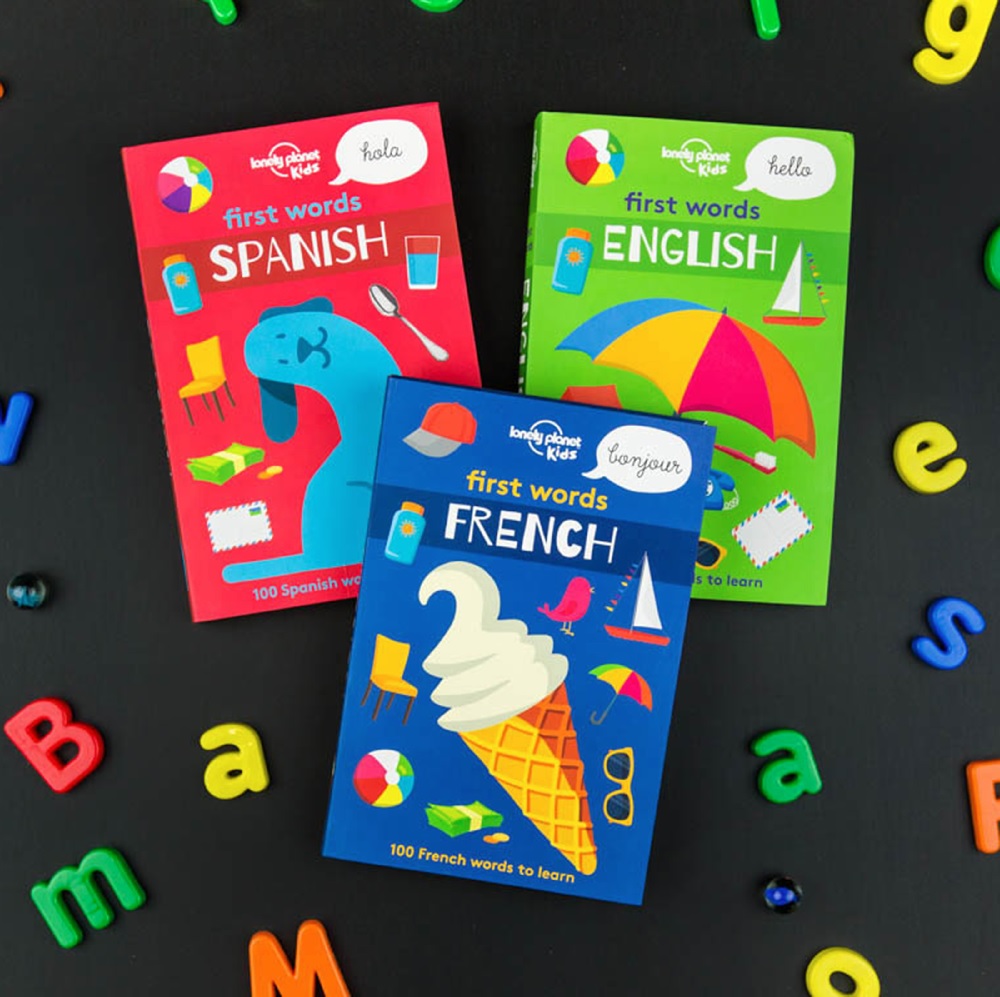 Beyond designing for the brand as a whole, are you personally illustrating some of the books? Do you have a hand in cultivating talent for new books?
Beyond designing for the brand as a whole, are you personally illustrating some of the books? Do you have a hand in cultivating talent for new books?
I’ve been lucky enough to have illustrated a few of our recent titles. First words--our new language series for young readers (March 2017)--most recently. I also illustrated the first titles in our family activity range and worked on the paper engineering and illustration for our little pop-up cities books.
Having worked in the industry for quite a few years, you tend to have favored illustrators, but you're also always on the lookout for new talent. For our upcoming Incredible Cabinet of Wonders title, I wanted to use a different artist for each of the beautifully illustrated cabinets that make up the book. It was tricky to find artists who were happy to illustrate just a single double-page spread rather than a whole book, but due to our good relationships with artists we've worked with before, we were able to get some of them to contribute to about half of the book. For the rest, we looked for some fresh faces. It worked well for both parties, as it meant we could get some exciting new artwork styles and they could try something a little different from their usual style that could then be used for their portfolio.
What are you most excited about in the future of Lonely Planet Kids?
We're growing our list year-on-year, so we have more titles than ever in the pipeline for 2018. I'm just making a start on a very exciting follow-up to How Cities Work with James Gulliver Hancock, and we have a book on ancient civilizations in development which is going to be amazing. I think I'm most excited to be working on a new big pop-up book. I'm eager to be able to get my teeth into some complex paper engineering again!
 James Gulliver Hancock is a well-traveled illustrator known for his playful illustration style. His obsession with drawing everything in the world has seen him work for major projects around the globe, with his work appearing on billboards, TV commercials, ceramics, books, board games and more… He has traveled extensively including an overland journey from Sydney to London via Southeast Asia, China, Japan, Russia and Europe and most recently has been living in New York, where he has worked for a variety of high profile clients and taken to the city with his personal project, All the Buildings in New York.
James Gulliver Hancock is a well-traveled illustrator known for his playful illustration style. His obsession with drawing everything in the world has seen him work for major projects around the globe, with his work appearing on billboards, TV commercials, ceramics, books, board games and more… He has traveled extensively including an overland journey from Sydney to London via Southeast Asia, China, Japan, Russia and Europe and most recently has been living in New York, where he has worked for a variety of high profile clients and taken to the city with his personal project, All the Buildings in New York.
How did you come to work for Lonely Planet Kids?
I've been doing illustration for a long time and I really love to do work that is informative, fun and approachable. I was approached by Weldon Owen to work on How to Be a World Explorer and later How to Be a Dinosaur Hunter for Lonely Planet when they first began publishing books for children in 2011. And now, with Lonely Planet running their own Lonely Planet Kids imprint since 2014, I am working on a flap book series with them that started with How Cities Work (Fall 2016) and will continue with How Airports Work, out in 2018. Lonely Planet is such a fun client to work for, especially now that we're doing these flap books, which was a childhood dream of mine to do.
You have a history of technical drawing. Is that how the idea for How Cities Work came into being?
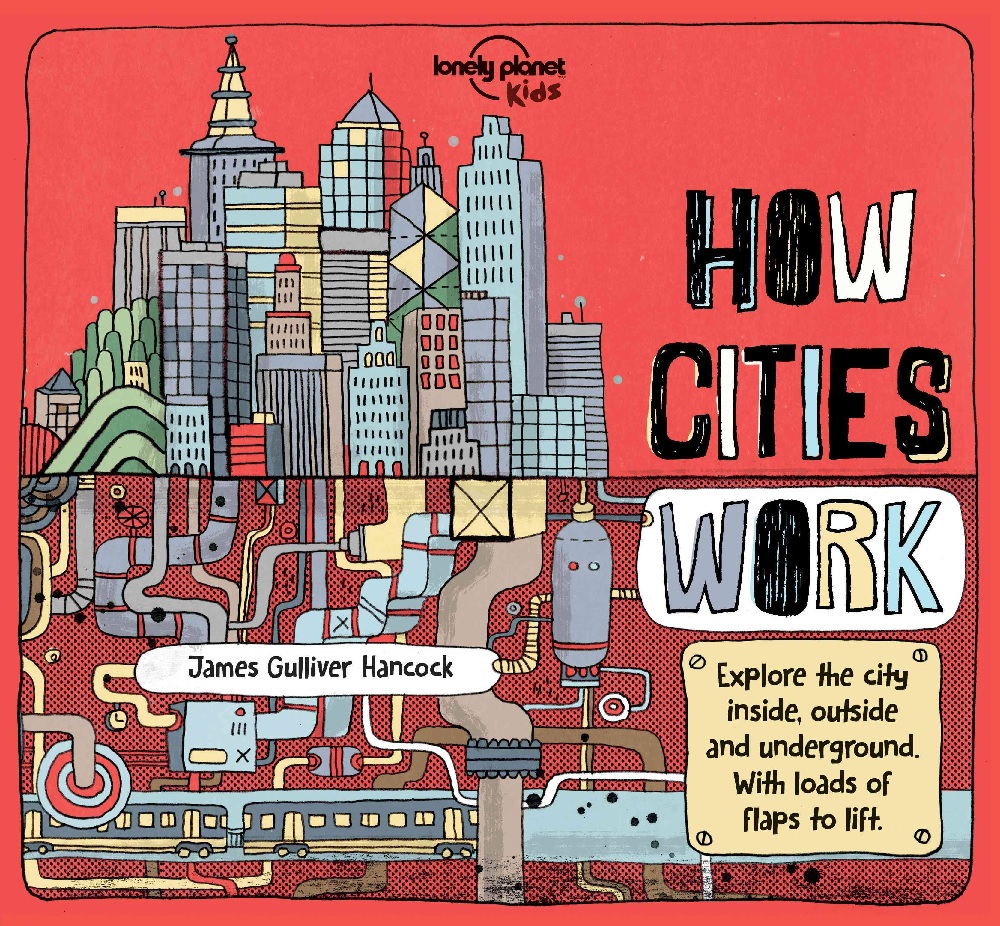 I definitely think my approach to drawing was an influence for the How Cities Work book. I loved technical drawing in school, but I also loved looser drawing and visual art. I'm always trying to marry the technical with the whimsical, and I think that approach works really well with the educational titles I'm doing with Lonely Planet. How Airports Work is a follow up to the How Cities Work book. I'll be working closely with my wonderful editor at Lonely Planet to develop a book that takes children through airports in a similar way we did for Cities.
I definitely think my approach to drawing was an influence for the How Cities Work book. I loved technical drawing in school, but I also loved looser drawing and visual art. I'm always trying to marry the technical with the whimsical, and I think that approach works really well with the educational titles I'm doing with Lonely Planet. How Airports Work is a follow up to the How Cities Work book. I'll be working closely with my wonderful editor at Lonely Planet to develop a book that takes children through airports in a similar way we did for Cities.
What are you most excited about in working with Lonely Planet?
Lonely Planet is such a great company to work for as they have such an amazing history. I remember lugging Lonely Planet guidebooks around with me when I traveled by myself through Asia and Europe. It is exciting to work for clients that you've always had great respect for.
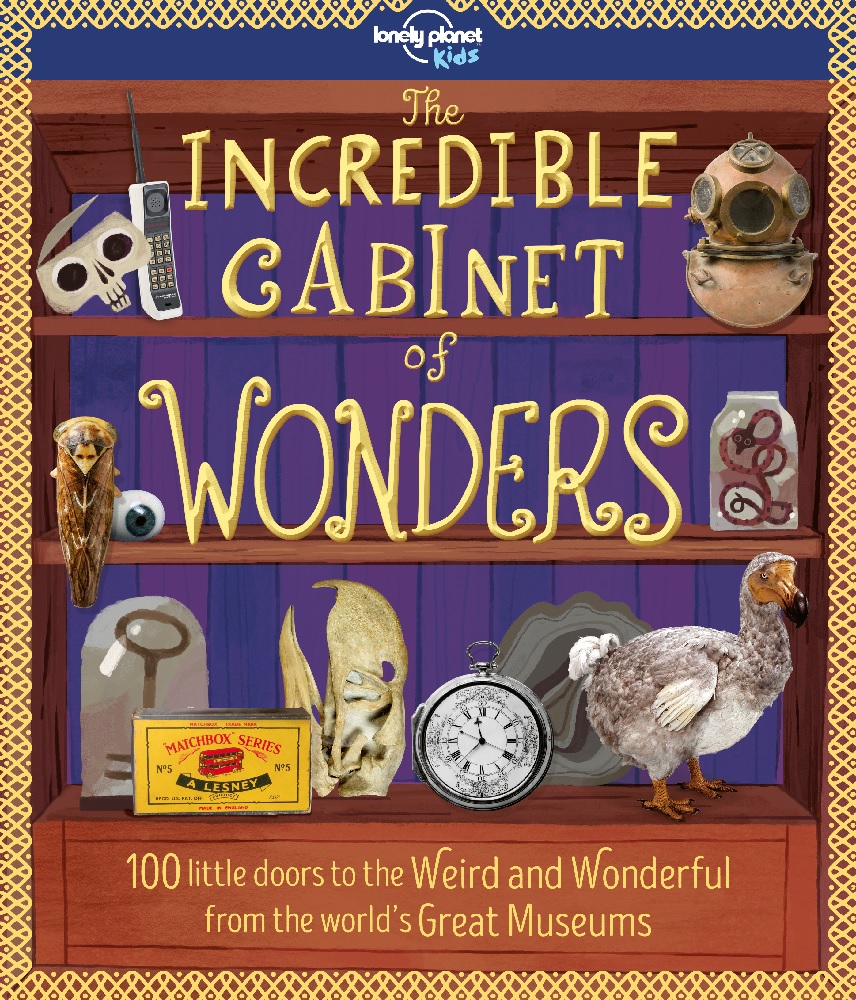 Incredible Cabinets of Wonders ($21.99, 9781787011045, Oct. 1, 2017). From giant squids and dinosaur bones, to treasure chests and space rockets, Lonely Planet reveals 100 strange and extraordinary objects from inside the world's great museums.
Incredible Cabinets of Wonders ($21.99, 9781787011045, Oct. 1, 2017). From giant squids and dinosaur bones, to treasure chests and space rockets, Lonely Planet reveals 100 strange and extraordinary objects from inside the world's great museums.
Dinosaur Atlas ($18.99, 9781786577191, Oct. 1, 2017). An interactive and illustrated journey through lost prehistoric lands and the dinosaurs that roamed them--packed with awesome facts, pull-outs and life-size fossils.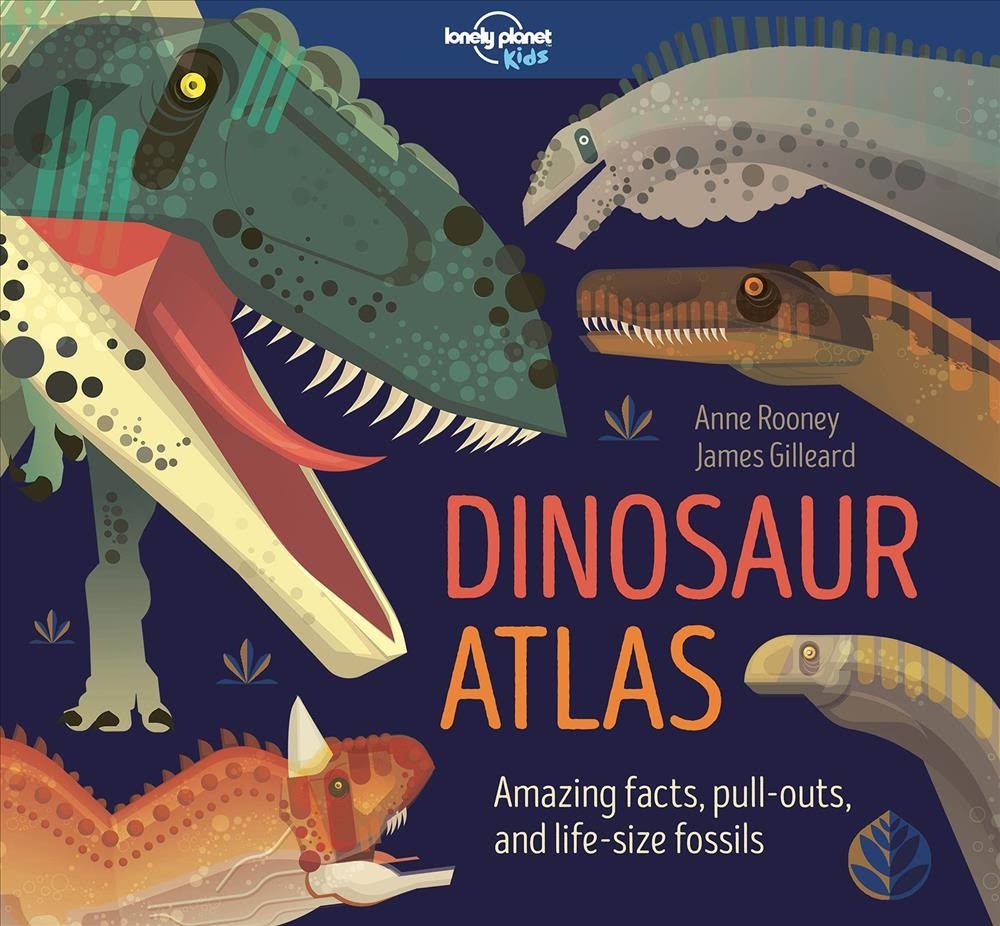 The Animal Book ($19.99, 9781786574343, Sept. 1, 2017). This illustrated encyclopedia celebrates over 100 of the world's most fascinating creatures and explores the amazing, diverse ways we share the planet.
The Animal Book ($19.99, 9781786574343, Sept. 1, 2017). This illustrated encyclopedia celebrates over 100 of the world's most fascinating creatures and explores the amazing, diverse ways we share the planet.
How Animals Build ($18.99, 9781786576637, Sept. 1, 2017). From spider webs and rabbit warrens, to bird nests and ant colonies, Lonely Planet peeks into the world of animal architects and discovers the secrets to their incredible structures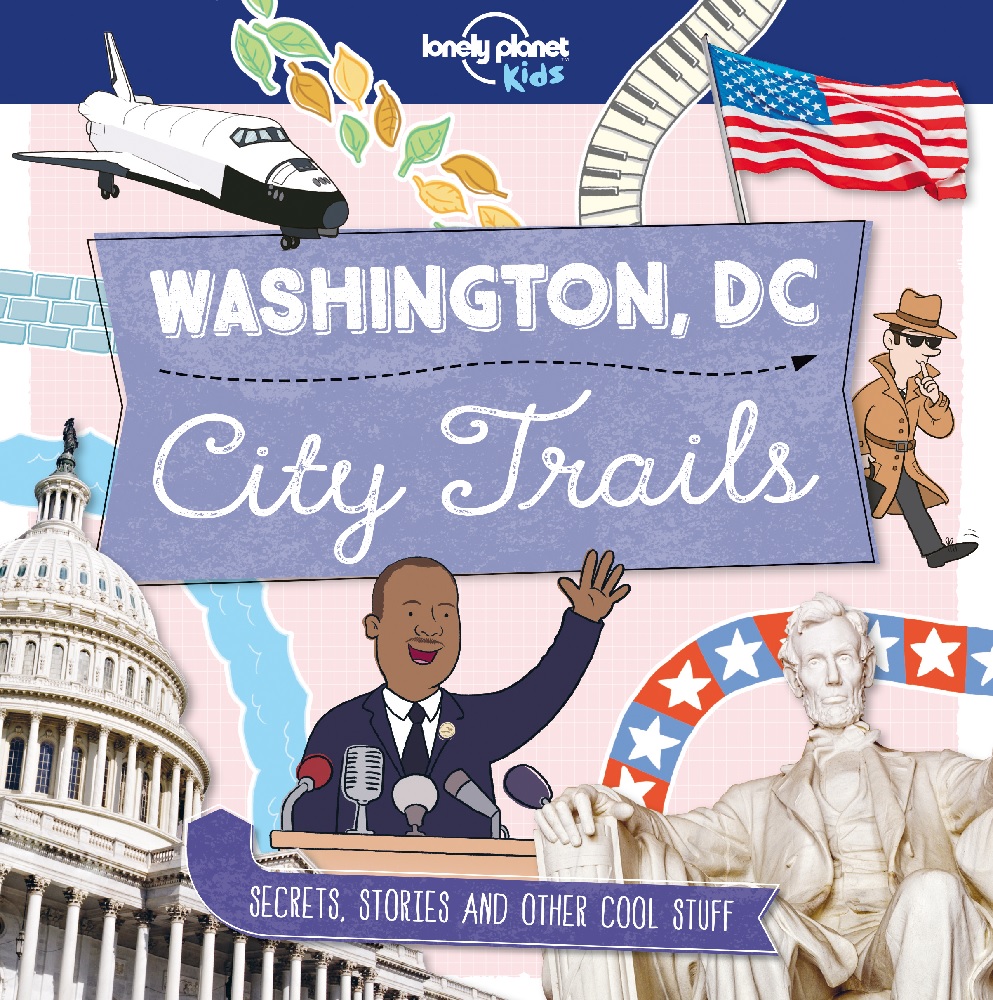 City Trails: Washington, D.C. ($12.99, 9781786579621, Oct. 1, 2017). With colorful themed trails featuring astonishing secrets and stories, kids can explore the capital like never before--all from the comfort of their own sofa. Meet Henry the Giant Elephant, eat oyster sandwiches, view the Grand Canyon on a ceiling and more!
City Trails: Washington, D.C. ($12.99, 9781786579621, Oct. 1, 2017). With colorful themed trails featuring astonishing secrets and stories, kids can explore the capital like never before--all from the comfort of their own sofa. Meet Henry the Giant Elephant, eat oyster sandwiches, view the Grand Canyon on a ceiling and more!
City Trails: Tokyo ($12.99, 9781786577269, Oct. 1, 2017). Colorful themed trails show kids where to find Pokemon food, meet a giant robot, see a toilet ghost and discover more amazing facts and cool stories about Japan's biggest city--all from the comfort of their own sofa. City Trails: Sydney ($12.99, 9781786579669, Oct. 1, 2017). Themed trails get readers under the skin to discover amazing facts and intriguing tales that aren't on tourist routes. Feed fish and chips to a pelican, meet a blue-tongued resident, encounter some little devils and lots more.
City Trails: Sydney ($12.99, 9781786579669, Oct. 1, 2017). Themed trails get readers under the skin to discover amazing facts and intriguing tales that aren't on tourist routes. Feed fish and chips to a pelican, meet a blue-tongued resident, encounter some little devils and lots more.
City Trails: Rome ($12.99, 9781786579645, Oct. 1, 2017). Colorful trails show kids where to see Rome's belly button, read a poem to chocolate, snack on witch sweets and discover more amazing facts and cool stories about Italy's most famous city.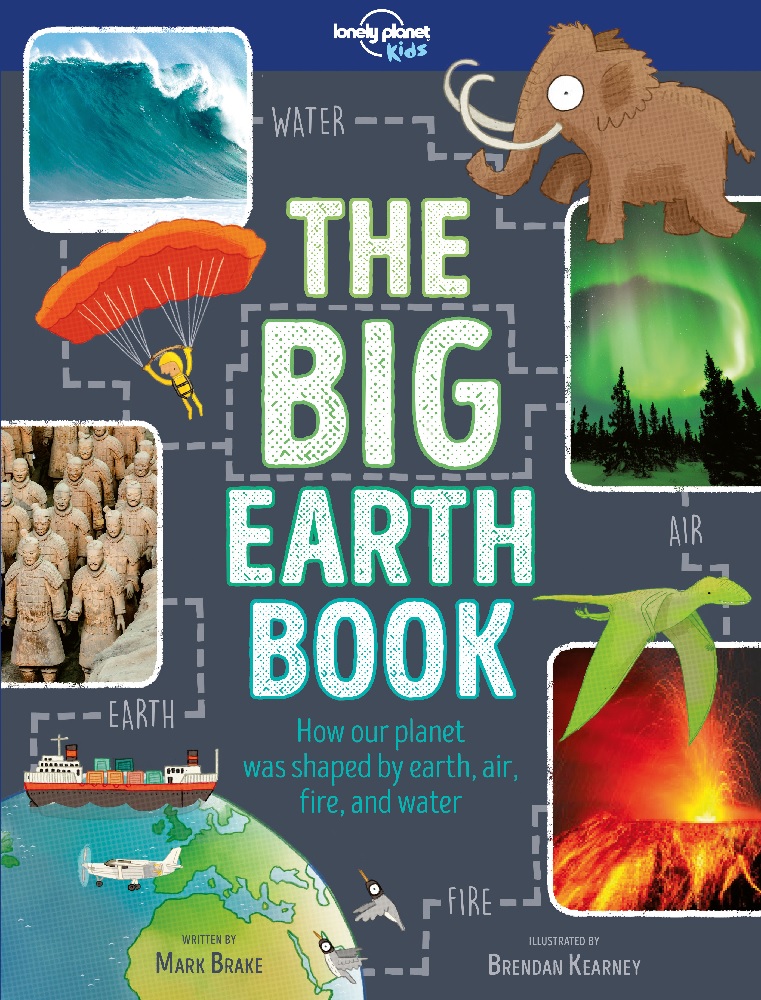 The Earth Book ($19.99, 9781787012783, Nov. 1, 2017). Planet Earth. Four elements. One incredible story. Get ready for a rollercoaster ride through history, geography, science and more. Take an amazing journey into the planet's past and discover how four elements--earth, fire, air, and water--created the world and everything that exists today.
The Earth Book ($19.99, 9781787012783, Nov. 1, 2017). Planet Earth. Four elements. One incredible story. Get ready for a rollercoaster ride through history, geography, science and more. Take an amazing journey into the planet's past and discover how four elements--earth, fire, air, and water--created the world and everything that exists today.
Around the World in 50 Ways ($15.99, 9781786577566, Feb. 1, 2018). Set off from London and travel across the globe--then try to make your way back again! Choose your route and all manner of transportation, from bicycles and sleds, to steamboats and hot air balloons. Visit well-known cities and exotic, far-flung places along the way and learn facts about each destination to create a fun-filled voyage of discovery. Make your decisions wisely, because not every path will take you to where you want to go!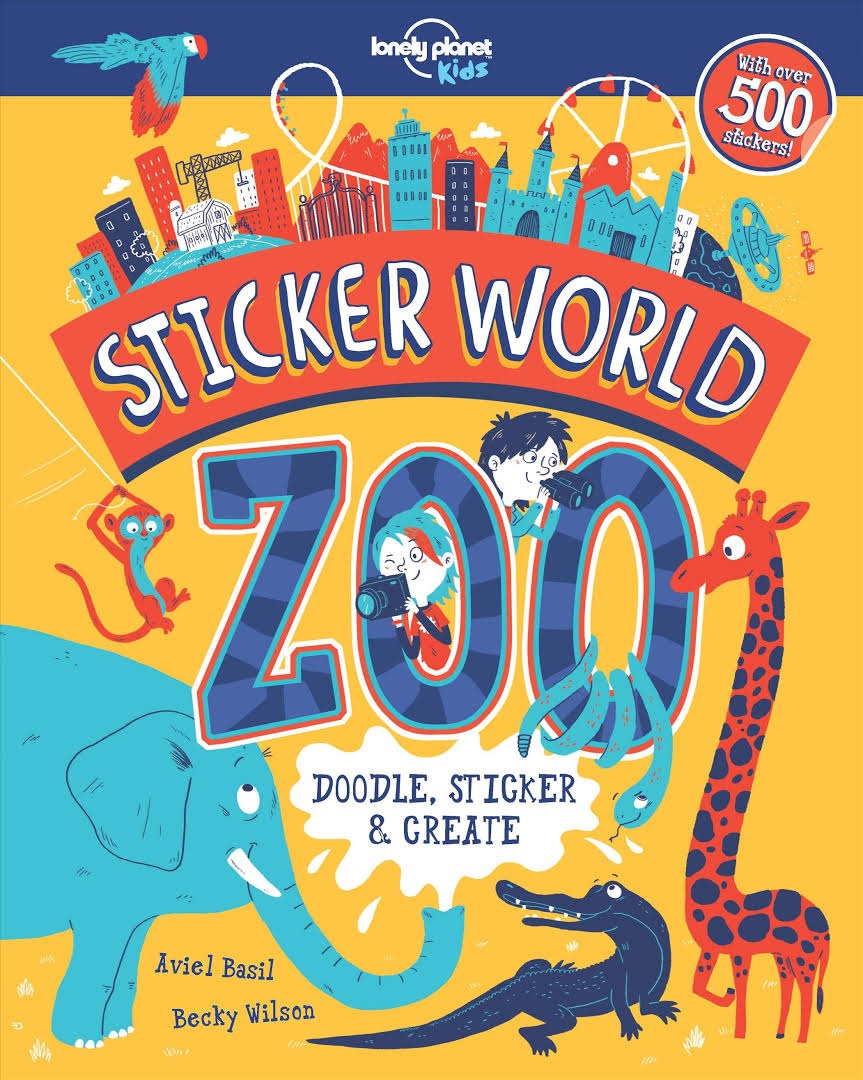 Sticker World: Zoo ($6.99, 9781787011397, Feb. 1, 2018). Part doodle book, part sticker book, this interactive title enables kids to create the zoo of their dreams. By becoming a planner, architect and builder, they can add stickers and drawings to each page to gradually bring their zoo to life. Create a watery wonderland for penguins to enjoy, choose what items are sold in the gift shop, design the zoo's logo and more.
Sticker World: Zoo ($6.99, 9781787011397, Feb. 1, 2018). Part doodle book, part sticker book, this interactive title enables kids to create the zoo of their dreams. By becoming a planner, architect and builder, they can add stickers and drawings to each page to gradually bring their zoo to life. Create a watery wonderland for penguins to enjoy, choose what items are sold in the gift shop, design the zoo's logo and more.
Sticker World: Theme Park ($6.99, 9781787011373, Feb. 1, 2018). This Sticker World entry lets kids create their dream theme park with stickers and drawings. Design a death-defying roller coaster, choose what sweet treats are sold and create a fun mascot.
Sticker World: Museum ($6.99, 9781787011359, Feb. 1, 2018). This Sticker World title lets kids craft the museum of their dreams. Use stickers and drawings to create an amazing entrance, design your cafe and the food it sells, draw an exhibition poster and fill the picture frames with art.